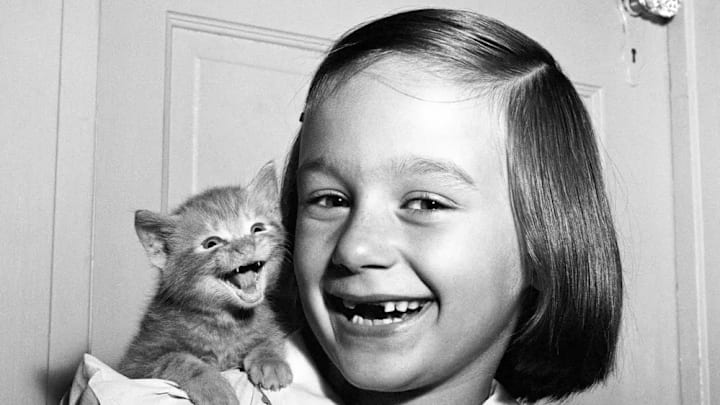Go behind the scenes of Walter Chandoha’s 75-year-long career as a cat photographer with these incredible photos from the new bookCats. Photographs 1942–2018.
Though Walter Chandoha had been nursing an insatiable interest in photography since high school, he didn’t discover his love for capturing cats on camera until about a decade later, when he rescued a kitten from the cold winter streets of New York City in 1948. The kitten’s manic midnight antics captivated both Chandoha and his wife, and they aptly named him Loco. Soon, Chandoha began photographing his new feline friend, which became the start of a storied 75-year-long career in feline photography that lasted until Chandoha’s passing in January 2019, at age 98.
The images below are excerpted from Chandoha's posthumous book Cats. Photographs 1942–2018, now available for pre-order from TASCHEN.
1. Paula and Kitten, Long Island, 1955

In this photo, the kitten mirrors the gleeful, toothless mien of Chandoha’s daughter Paula with such precision, it’s no wonder people often say that pets look like their owners. In reality, the kitten was just mid-meow.
2. Walter Chandoha in His Studio, Long Island, 1955

Here, Chandoha captures the attention of a cat with a good old-fashioned feather. Toys weren’t the extent of his management style—he also made a lot of noise. “Meowing, barking, mooing, bleating,” he said. “Sometimes my studio sounded like a barnyard.”
3. American Shorthair and Beagle, New Jersey, 1966

Though Chandoha worked with plenty of dogs over the duration of his career, he was a cat man, through and through. “The expressions dogs make are pretty limited,” he said. “They don’t get into real exciting postures, as a cat will.”
4. Siamese Kittens, New Jersey, 1962

Of all Chandoha’s influences, 17th-century Dutch painter Johannes Vermeer was the most significant. “The way he presented his subjects with light and shadows is something I use in all my pictures,” Chandoha explained. He used six lights to illuminate the most entrancing features of his subjects—in this photo, it’s likely the glowing eyes of the Siamese kittens that draws you in.
5. Siamese, New Jersey, 1984

Chandoha often credited his wife with helping him snap the perfect shot at the perfect moment. “She had magic in her hands,” he said. “She could feel by the muscular tension whether the cat was relaxed or tense. Then she’d say ‘Walter, he’s ready,’ and sure enough, the cat would get into a great pose.”
6. Maria and Family Cats, New Jersey, 1962

The Chandoha children were actively involved not only in their father’s photography career, but also in the care and keeping of the many felines the family kept on their 46-acre farm. According to Chandoha, “cats would often become hypnotized when they were with the kids. They had a rapport that was phenomenal. There was no reticence on the part of the cat to get out of the way as they would do with an adult forcing their attention on them.”
7. The Mob, New Jersey, 1961

Chandoha was presented with the opportunity for one of his most famous photos, The Mob, when a group of cats began tailing him while he was walking down the road. Because he carried his camera almost everywhere, he immediately dropped to his stomach and snapped the close-up shot. The image exemplifies Chandoha’s belief that cats are innately family-oriented, though they’re often considered solitary creatures.
8. 11 Kittens, New Jersey, 1964

A tiger trainer for Ringling Bros. and Barnum & Bailey once advised Chandoha on the three cardinal components of getting animals to behave: “You’re going to need patience, sound, and food. Patience, we know you’ve already got,” he said. “Food is a given. As you feed the cat, make a sound that can be repeated time and time again.” Chandoha then used these principles to direct sometimes one, two, or 11 cats.

You can pre-order a copy of Cats. Photographs 1942–2018 on Amazon or from TASCHEN for $50.
